In recent months, news stories across the country have covered public meetings in which discussion of hot-button issues resulted in growing frustration among attendees and meeting leaders alike.
Some of these meetings culminated in attendees being asked or forced to leave. Especially when tensions are high, it can be hard to know if audience members are trying to be disruptive or if they are simply expressing frustration.
It is important for members of the public to have the opportunity to be heard. When people feel heard, they feel valued. Most cities provide time during council meetings for public comment, allowing attendees to speak on matters relating to the city. However, meeting attendees do not have the right to intentionally and substantially disrupt meetings. City leaders must balance the public’s First Amendment speech rights with the city’s need to conduct business in an efficient and orderly fashion.
A city council or committee meeting is usually considered a “limited public forum.” A limited public forum is limited to a specific class of speakers and to speech on specific topics. Though public comment periods in city meetings are open to the public, comments are usually limited to city matters. In a recent case, McDonough v. Garcia, the 11th Circuit Court of Appeals followed U.S. Supreme Court precedent, holding that in a limited public forum, the governing body can limit public speech but any restrictions must be viewpoint neutral and reasonable in light of the meeting’s purpose.
In 2006, the Supreme Court of Georgia provided insight into when speech at a public meeting crosses the line into behavior that could be addressed by an anti-disruption law. In State v. Fielden, the Court sought to balance the public’s First Amendment rights with a city’s interest in conducting lawful meetings, reasoning that activities that are intended to prevent or disrupt lawful meetings and result in the early termination or substantial disruption of a lawful meeting, are not protected speech. The court held that local anti-disruption laws should be limited to situations in which a member of the public intends to disrupt or prevent a lawful meeting, procession or gathering and substantially obstructs or interferes with the lawful meeting, procession or gathering by physical action or verbal utterance.
Having a plan for dealing with disruptive meeting attendees can prevent missteps that might otherwise occur and can help ensure the city responds to disruptive behavior in a uniform and content-neutral manner, based on the disruptive nature of the behavior itself and not on the views expressed. If your city does not yet have a plan for addressing disruptive behavior in meetings, consider the following steps:
- Working with your city attorney, determine whether your city has a local ordinance addressing disruptive behavior during meetings. If it does, ensure the local ordinance complies with requirements of the Fielden case (i.e., addressing the intent to disrupt and substantial disruption of the meeting). If it does not, consider working with your city attorney to craft an anti-disruption ordinance that meets Fielden’s requirements. Currently, there is not a valid state law addressing disruption of local meetings.
- Next, ensure all city leaders (e.g. the mayor, council members, high-level staff and the city attorney) are familiar with the anti-disruption ordinance and the consequences of violating it. Since removing someone from a meeting could be as disruptive to the meeting as the disruptive individual’s behavior, it would be good to determine how intentionally disruptive an attendee’s behavior would need to be, and what level of disruption would be considered “substantial”, to warrant removing a disruptive attendee from the meeting. City leaders could also consider lesser responses to disruptive behavior, such as giving warnings for brief, one-time or infrequent disruptions, or allowing law enforcement to independently issue citations for violations of applicable local ordinances.
Hopefully, your city will never need to use its anti-disruption plan. However, if an attendee acts in a disruptive manner during a lawful meeting, before acting take a moment to consider whether there is evidence that the attendees intended to disrupt the meeting. If there is evidence that the attendee intended to disrupt the meeting, consider whether the meeting was actually and substantially disrupted by the attendee’s behavior. Once the city leaders have completed this analysis, they can determine whether it is appropriate to invoke the city’s anti-disruption ordinance. Finally, it is important that city leaders make it clear that any action taken is to prevent further disruption of the meeting.
